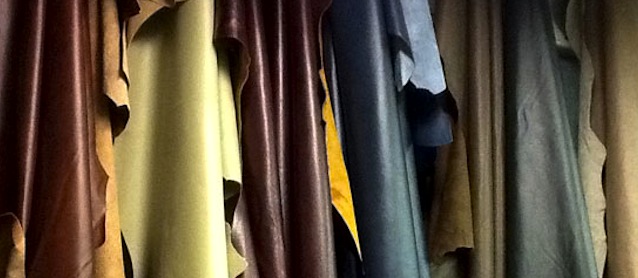According to a recent report published by IMS Automotive Interiors Worldwide, the use of leather in the European auto market is set to significantly increase in the next five years – placing higher demand on hides and, subsequently, raising its cost for auto trimmers.
The report, titled “Leather in European Auto Industry 2012”, is available in full through IMS for about $8,000. However, Leather International magazine has summarized the reports findings in eight points:
1. In 2011 leather seating was fitted to just over 19% of European-produced cars. If mixed leather (for example, leather/Alcantara) seats are included the total exceeded 25%.
2. Further significant growth is forecast during the next five years to take the overall total (leather and mixed leather) to just below 32%. By 2016 it is forecast that some form of leather seating will be fitted to nearly one in three European-produced cars.
3. This growth is all the more impressive when looked at in terms of the number of cars expected to be fitted with leather and mixed leather seats; ims forecasts that this will increase from an estimated just under 4mn in 2011 to a forecast of just over 6 million in 2016 – a volume rise of over 50%.
4. Some vehicle marques and segments have already reached saturation point in terms of leather fitment. This applies in particular to exclusive British brands such as Aston Martin, Bentley and Roll-Royce, as well as the premium models from the German producers Audi, BMW and Mercedes-Benz. Growth is expected to come mainly from the volume brands like Ford, GM Europe and Renault which are increasingly fitting leather (or mixed leather) as standard on their top-of-the-range models and offering it as an option elsewhere.
5. This growth will be accompanied by major challenges, especially with regard to leather supply. In particular, there is likely to be upward pressure on hide prices, along with the need to purchase increasingly from non-European sources.
To meet these cost pressures, the industry has had two main responses – higher capital expenditure to improve productivity and the outsourcing of processes to low cost countries.
6. Potential shortages of hides and the corresponding likelihood of higher prices are the main reasons behind the expected rapid rise in mixed leather fitment.
7. It’s probable too that vehicle manufacturers will show increasing interest in some leather alternatives such as Alcantara (which offers differentiation, especially in sporting models) and the latest vinyls which provide strong competition to leather in terms of their appearance and properties.
8. Few European-based tanneries have the necessary scale and attributes to meet the demands of supplying to the auto sector. Economic conditions in recent years have been tough with the result that the sector has experienced a degree of consolidation. It is anticipated that further structural change among European tanneries will take place, especially as leather suppliers will be required to follow the international expansion of their major customers and thereby operate increasingly on a global scale.
9. Some Tier 1 seating suppliers are moving towards vertical integration by making investments in the leather processing sector. To counter this trend leather suppliers are becoming more active in design and development functions and have begun to build their own relationships with the OEMs.
While the report’s main focus is on the European auto market, it is easy to see how pressures of supply and demand may affect leather prices in the United States as well – especially since European-based tanneries don’t have the resources to meet increasing demand in their market. How drastic of a price hike will this translate into for US-based auto upholstery shops? Only time will tell.
For more info on the market for automotive leather, read our article: Ever Wonder How Leather is Priced?

I need the leather
I need the leather. Iam from Qatar. May mobile 0097466695470
Hi Nadeem, Thanks for covering this topic “Is Leather Really Better Than Vinyl”. appreciate some topics but I have my own thought on Faux and Genuine leather.
Thanks